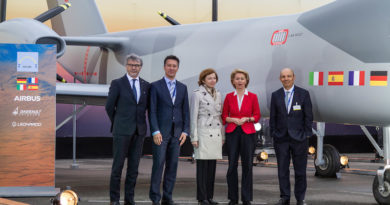
To boost and facilitate the process of dispersion of new technologies the role of SME’s is crucial through the PPP
In recent years we could witness the emergence and expansion of numerous new technologies regarding mobility, transport and automotive industry. As an individual a customer and a consumer I have been always deeply interested in reading about the latest research and development sections of various magazines, newspapers and blogs.
But after reading about it for some time, I was beginning to wonder when would all these new technological developments finally hit our streets and become a part of our everyday life? This is especially intriguing if one considers that, even though more than a decade has passed since the EU’s eastern enlargement, there are still big inequalities between various regions within the EU, not to mention the ever-growing gap between urban and rural areas.
To put this in the context of transport, one could argue that to achieve a breakthrough we need a much wider dispersion of alternative fuelling facilities. To facilitate this process of dispersion, we need to get SMEs and Public Private Partnerships on board.
We need both these intermediaries in bringing new technologies out of the labs and into our streets.
PPPs are excellent mechanisms for public entities to procure and implement public infrastructure and/or services using the resources and the expertise of the private sector. There are two crucial parts of the partnership from the private side, those parts are resources and expertise.
Public Private Partnerships enable governments to focus on policy making by delegating day-to-day operations to private firms. PPPs also support and drive innovations. A public entity can present the problem to be solved to businesses, and the businesses can work out the innovative solution in a com- petitive environment.
After these private businesses present their solutions they can decide which solution is the best for their goals. On the other hand, SMEs could be perceived as the final link in the long chain between industry and consumers.
In this article I will give you a short description of two European projects that I find particularly important and which are connected to my recent activities as a member of European Parliament’s Committees of Transport and Tourism and Regional Development.
Recently I was an opinion shadow rapporteur to the Committee on Industry, Research and Energy (ITRE) report about the European gigabit society and 5G. The 5G Infrastructure Public Private Partnership (5G PPP) is a joint initiative between the European Commission and European ICT (Information and Communication Technology) Industry.
The initiation of the 5G network will be conducted mainly through private investments, but it will require European coordination and planning which means cooperation between academia, research institutions, private sector, including SMEs and the public sector.
The European Commission’s 2013 Public Private Partnership initiative submits 700 million euros of public funding to enable 5G in Europe by 2020. It is going to motivate private companies to innovate and further invest.
By supporting the new high-speed connectivity, we can produce substantial economic growth and have the potential to create two million jobs Europe-wide.
The other great example of PPP is the FCH JU (Fuel Cells and Hydrogen Joint Undertaking). It is a Joint Undertaking formally agreed on by the Council of Europe. It has a budget of 1.3 billion euros for the period of 2014 to 2020. FCH technologies hold great promise for energy and transport.
Recently I had the opportunity to test drive a fuel cells and hydrogen powered car. The big advantage of these cars is that unlike in case of electric cars it takes only a couple of minutes to charge them, to fuel them, and they have a range of hundreds of kilometres. The fuel cells have a very long expected lifespan, and they are almost fully recyclable.
Both projects sound quite futuristic, and in spite all the efforts quite long time will have to pass until they are widely available throughout Europe. We are seeking 5G, but the truth is that Europe is lagging behind North America and parts of Asia even when it comes to 4G access.
In 2015 more than 75% of the US population had access to 4G, while that is true only for 28% of EU population. It is hard to deploy 5G if we are still struggling with 4G. We have to work on the infrastructure and close up the gap between the EU and other parts of the World.
The same goes for the FCH. At this moment, there is only a single hydrogen fuelling station for these vehicles in the whole of Belgium, and none in Member States like Romania or Hungary. To make the fuel-shift work we have to get every Member State on board.
There is already a big concern that the deployment of zero and low-emission cars will not happen evenly throughout Europe, and that eastern parts of the EU will become a “parking lot” for dirty technologies and fossil fuelled vehicles.
European institutions need to address these concerns as soon as possible and I am confident that PPPs and SMEs have a very important role in making these European policies work in our Member States for the benefit of our citizens.




